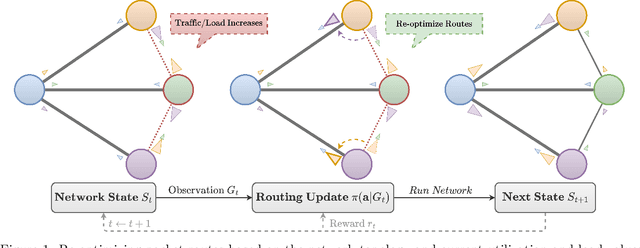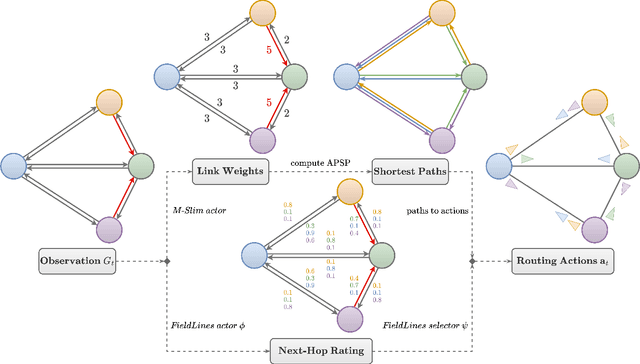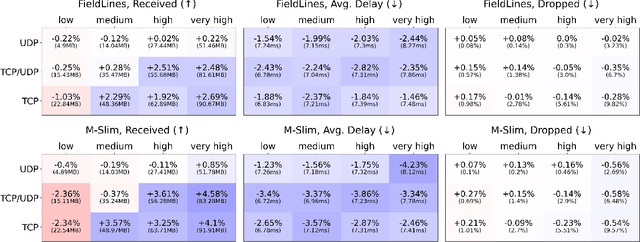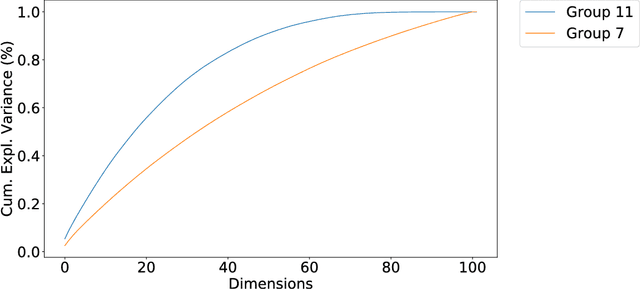Patrick Jahnke
Learning Sub-Second Routing Optimization in Computer Networks requires Packet-Level Dynamics
Oct 14, 2024



Abstract:Finding efficient routes for data packets is an essential task in computer networking. The optimal routes depend greatly on the current network topology, state and traffic demand, and they can change within milliseconds. Reinforcement Learning can help to learn network representations that provide routing decisions for possibly novel situations. So far, this has commonly been done using fluid network models. We investigate their suitability for millisecond-scale adaptations with a range of traffic mixes and find that packet-level network models are necessary to capture true dynamics, in particular in the presence of TCP traffic. To this end, we present $\textit{PackeRL}$, the first packet-level Reinforcement Learning environment for routing in generic network topologies. Our experiments confirm that learning-based strategies that have been trained in fluid environments do not generalize well to this more realistic, but more challenging setup. Hence, we also introduce two new algorithms for learning sub-second Routing Optimization. We present $\textit{M-Slim}$, a dynamic shortest-path algorithm that excels at high traffic volumes but is computationally hard to scale to large network topologies, and $\textit{FieldLines}$, a novel next-hop policy design that re-optimizes routing for any network topology within milliseconds without requiring any re-training. Both algorithms outperform current learning-based approaches as well as commonly used static baseline protocols in scenarios with high-traffic volumes. All findings are backed by extensive experiments in realistic network conditions in our fast and versatile training and evaluation framework.
Towards Fine Grained Network Flow Prediction
Aug 20, 2018



Abstract:One main challenge for the design of networks is that traffic load is not generally known in advance. This makes it hard to adequately devote resources such as to best prevent or mitigate bottlenecks. While several authors have shown how to predict traffic in a coarse grained manner by aggregating flows, fine grained prediction of traffic at the level of individual flows, including bursty traffic, is widely considered to be impossible. This paper shows, to the best of our knowledge, the first approach to fine grained per flow traffic prediction. In short, we introduce the Frequency-based Kernel Kalman Filter (FKKF), which predicts individual flows' behavior based on measurements. Our FKKF relies on the well known Kalman Filter in combination with a kernel to support the prediction of non linear functions. Furthermore we change the operating space from time to frequency space. In this space, into which we transform the input data via a Short-Time Fourier Transform (STFT), the peak structures of flows can be predicted after gleaning their key characteristics, with a Principal Component Analysis (PCA), from past and ongoing flows that stem from the same socket-to-socket connection. We demonstrate the effectiveness of our approach on popular benchmark traces from a university data center. Our approach predicts traffic on average across 17 out of 20 groups of flows with an average prediction error of 6.43% around 0.49 (average) seconds in advance, whilst existing coarse grained approaches exhibit prediction errors of 77% at best.
 Add to Chrome
Add to Chrome Add to Firefox
Add to Firefox Add to Edge
Add to Edge